You owe it to yourself to answer frequently asked questions with an article or video to better explain or answer common issues people are having. This will be an easy answer for future similar questions, but will be a great one on one commercial for you and your products / services. Whether you get them from emails, social media, crowd sourcing, or find common question online (type topic and FAQ into google), you can have plenty of content ideas to create useful articles / sales copy.
Popular questions: How to Questions – How do I do….?
What should I do questions.
Here’s WHY answers are the best. When you get a WHY question, answer it thoroughly as those can be feature article length posts and cause you to re-think a way you do things.
Find proof that your products / services work or proof in your answers using scientific studies, government studies, or testimonials as well.
https://www.facebook.com/groups/copywritingandcontenthacks/
Get Copywriting Secrets for FREE – Just pay shipping www.copywritingsecrets.com
and for more information on the wizards used to make outstanding sales copy check out https://copyandcontent.ai.
Don’t want to miss any episodes? Subscribe to “The Copy And Content AI Report” YouTube Channel Here for more information about creating successful sales copy to sell ANYTHING:
The Transcript…
Jim Edwards: Hey guys, Jim Edwards here along with…
Screw that! Stew, do the introduction.
Stew Smith: Hey everybody, Stew Smith here along with…
Jim Edwards: Jim Edwards.
Stew Smith: And welcome to Sales Copy And Content Marketing Hacks Podcast with Jim Edwards and Stew Smith
which is part of the Jim Edwards Method at TheJimEdwardsMethod.com.
Jim Edwards: Man, that was pretty good!
Stew Smith: Today we’re going to talk about content creation…
But it is a focus on questions.
And you owe it to yourself if you have a frequently asked question,
Whether you get it through social media,
Direct messaging,
Instant messaging,
Emails,
Phone calls,
Whatever that is…
You owe it to yourself to write an article on that question.
Because then you can easily answer it by sending someone a link,
Sending someone to that page…
And then obviously that page should have something at the bottom that has some sales copy that will drive them to your store.
Jim Edwards: That’s right!
Stew Smith: Easy one-on-one marketing, and it’s a great way to incorporate one-on-one conversations into your business that actually produce sales at a higher rate than pretty much anything else out there.
Jim Edwards: While saving a crap ton of time because you don’t have to answer the same question by hand over and over and over and over and over,
Which becomes quite tedious and causes you to want to wring people’s necks…
And ultimately makes you want to quit your business and put on a hairnet and start making a living by asking people,
“Would you like fries with that?”
Which none of us want to do, having been there…
So the big thing to understand is that questions are also the ultimate source…
…not only of one-on-one marketing and time-saving in your help desk…
But they’re also the number one easiest source of actual fodder you can use to create content on demand.
And so how many articles a month, Stew, do you typically write?
From any type and from any source.
How many articles do you usually do?
Stew Smith: I usually do three a week for military.com, and I’ll post probably one new one on my own site.
Jim Edwards: Okay, so four articles a week, 16 articles a month,
Stew Smith: Yes.
Jim Edwards: Let’s say 480 or…
A lot…
Stew Smith: Yeah, I do have those 16 articles…
Jim Edwards: And I know you do and you’ve done it for years, and years, and years and years…
What percentage of those would you say are either full or in part you simply answering a question?
Somebody has asked.
Stew Smith: At least 50%…
Jim Edwards: Really…
Stew Smith: Yes.
Jim Edwards: Okay, So two articles a week with somebody?
Stew Smith: Yes. So usually the way I work it as I actually have a feature article I do on Monday…
An “Ask Stew” article that I do on Wednesday…
And then a Workout of the Week article that I do on Friday.
And then for my personal site, I do that one article that is just a constantly frequently asked question from a new 18-year-old kid that wants to do something in the military that everybody asks…
And I just really try to nail that home with a good answer.
So I can drive them, But also,
“Hey, here’s the book that’s right for you.”
And
“Here’s the program you should consider.”
Jim Edwards: Yeah,
Stew Smith: It turns into a good little sales copy on the back end of it.
But it answers the question at first.
Jim Edwards: Sure… And people want to do it.
I have found that the most popular questions are how to questions…
That’s like,
by far and away…
“How do I do this?”
“How do I do that?”
“How do I solve this problem?”
“How do I reach this objective?”
“How do I fix this?”
“How do I avoid this?”
Those are the number one most popular questions.
“How do I increase my pull-ups?”
“How do I write a book?”
“How do I fix my website?”
That kind of a thing.
That’s gotta be two-thirds of all the questions I do is “how to do something,”
“How not to get hurt.”
It’s just some derivation of a “how to.”
The next is related to tools.
Which is more like a…
“What should I use in this situation?”
“What should I do here?”
“What does this mean?”
You know, and this is going back to just regular high school English…
Who,
what,
where,
when,
why,
and how…
Stew Smith: Sure.
Jim Edwards: But it’s not in that order…
How is the most important?
Next is what,
“What should I use for this?”
Some “who” questions…
“Who should do this?”
“Who should…”
But it’s funny how they all come back to some sort of action.
“Who should do this?”
“How do you do this?”
“What do I need to do this?”
And the questions that are the most popular,
Ultimately are somebody needs to get from where they are to where they need to be…
And there’s either an action,
A tool,
A resource,
A person,
A missing bit of information that they need in order to go from here to here.
And the other thing that I’ve found with questions is some questions are better than others from the standpoint of they’re pretty… big.
Meaning you can’t…
“How do I create a PayPal like service?”
Some questions… help me out here…
But some questions are like 35,000 feet questions,
Stew Smith: Oh yeah.
Jim Edwards: 10 thousand feet,
A hundred foot
And right here.
And you gotta kinda answer it based on the type of question it is.
Because if somebody asks,
“How could I create a service like PayPal?”
You could answer that in 500 pages…
Or you could answer that in 500 words.
Stew Smith: Right.
Jim Edwards: And so you gotta kind of look at…
…this is as much feel as it is just experience and other stuff…
I try and keep my articles around 500 to a thousand words…
I know there are some pieces that say…
“Google says that you need to have at least 1400 words in order to be considered an authority and blah, blah, blah, blah, blah, blah.”
Stew Smith: Is that right? Is that the number?
Jim Edwards: Yeah, I think so.
Stew Smith: Is it?
Jim Edwards: Yeah. I think.
Stew Smith: Because I do some editing for another website.
A military-style website, and the minimum standard that we can do there is 700 words.
Jim Edwards: Okay…
Stew Smith: So I think 700 words has something to do with also optimization for search engines.
Jim Edwards: And every geek has their own little thing from the three or four tests that they’ve done and all of a sudden it’s Gospel truth.
Stew Smith: Yes. And it has changed three times in three years.
Jim Edwards: Oh yeah… Three times in the last week…
…depending on who’s doing their thing…
The point though is that you answered the freaking question,
but you gotta do it in an article,
Not in a book.
Stew Smith: YES! Not just in an email.
In fact, you know what I tend to do,
I tend to go ahead and write the email,
As I’m writing an article…
And just ping it to them,
But I cut and paste it,
Put it right into a document, and then now I have personalized along with email answer to this person…
But then I’ve also created an article out of it, and so you kind of get a two-for-one deal out of that.
This person thinks,
“Wow, you really went all out on the answer in this question. I wasn’t expecting that.
I was expecting, just do more pull-ups.”
Jim Edwards: Right.
Stew Smith: But I tell you one of my favorite questions I like to get that I don’t get enough of is a why question.
Jim Edwards: Okay…
Stew Smith: You know,
“Why do you do this?”
“Why do you swim this far if you only need to test for this?”
“Why do you do this many pushups in this workout?”
I don’t get that very often, but when I do,
It makes me think,
All right,
“Why do I do it that way?”
And then I explain it, and it becomes a really neat type of feature article for me.
So it’s another way to…
…instead of answering a question directly and saying this someone asked this question,
It actually requires me to think a little deeper, and that actually gives me a little more meat for a bigger article.
I don’t call it a question article…
but it answers that question in a broad way.
Jim Edwards: Well, it’s interesting…
“Why” questions are the most important in sales copy.
They’re the ones that give people reasons or…
People are searching for a reason.
But thinking in those terms requires somebody to actually think and consider…
And people don’t want to think, and they don’t want to consider…
What they want to do is do what I call “treating symptoms.”
So, someone should be asking the question,
“Why should I train six days a week and alternate between pyramids and supersets and Max Rep sets on a regular basis?”
And then,
“Why should I track my reps and use bands and do all this other stuff?”
That’s the real question they should be asking.
Stew Smith: Right.
Jim Edwards: But the question they ask is,
“How can I do more pull-ups by next Friday?”
Stew Smith: Right.
Jim Edwards: That’s not the right question.
But you can’t tell him that because somebody else is going to write an article or give them information on how to do more pull-ups.
Stew Smith: Sure.
Jim Edwards: So what you can do is do a Jiu Jitsu move of,
“Okay, how do you do more pull-ups? Well, the short answer is you do this, this, this, and this.”
“Now, why do you want to do more pull-ups for the long haul?”
Or here’s another question you might want to consider, and you do that…
You see what I mean?
Stew Smith: Oh yeah, absolutely!
You can answer it really quickly and then say,
“Here’s why…”
Jim Edwards: Yeah.
Stew Smith: Then that will add some content for you…
For that article that you write creating instead of…
Cause some answers are one-word answers,
Jim Edwards: Right. Yes.
Stew Smith: No! I mean, you need to run more if you’re going to join the military…
Jim Edwards: Yeah…
Stew Smith: Right.
Jim Edwards: Okay… There you go… So if you want to do more…
…I’ll just use pull-ups…
If you want to do more pull-ups,
The shorter answer is…
“Do more pull-ups.”
Now here’s what you need to do and why.
Stew Smith: Yes…
Jim Edwards: And boom there you go.
Stew Smith: That’s your content for an article right there.
Jim Edwards: So you can Jujitsu them and still meet them where they are right now.
It’s the short answer and the long answer…
That’s a perfect way to…
…just thinking about it…
That’s a perfect way to combine social media with your blog.
So on social media, so-and-so asked,
“How can I do more pull-ups?
And the short answer is you need to do more pull-ups in pyramid superset and Max reps sets…
But you need to do them in a specific order at a specific pace.
And so if you want the rest of the story…
Here’s how to do your pull-ups, exactly and why we do them this way.”
Stew Smith: Yeah… Here’s a workout pulled from this book that will give you a 12-week program to quadruple your pull-ups,
Jim Edwards: To quadruple your pull-ups, right. Without ever getting off the couch there, tubby.
So, that’s really cool… And this is good for us to talk about this stuff because it makes me think through why I’m doing what I’m doing…
And kind of cause you do this stuff kind of half-assed and then if you put a little thought into it,
You might get a whole lot better effort.
Stew Smith: And you always need to explain something that is fairly complex…easy.
That is the true mastery of what you do is when you can take a rather complex topic and break it down and make it easy to understand.
Jim Edwards: Yeah… Einstein said that if you want to prove how smart you are,
…I don’t remember the quote, but it’s…
“You’re only smart if you can explain something simply.”
But you think about it…
If you explain why to somebody that also elevates you because typically who explains why?
It’s an authority figure.
Stew Smith: A coach.
Jim Edwards: Yeah, a coach, an expert, a Guru, a teacher,
They’re the ones who are qualified to tell you why…
And, and typically if you tell him why…
Then that gives you the authority to tell them the how.
And then it also gives you the authority to give them the shortcut or the perceived shortcut.
And in this case, the shortcut would be a book…
It would be an online video…
It could be a piece of software…
You know, that’s interesting.
Stew Smith: And throw a little testimonial in there from previous podcasts, and you know, fluff up this article a little bit more and saying,
“Hey, this guy did the pyramid superset Max or upset Combo and look what he did.”
“And in three weeks, he doubled his scores.”
Jim Edwards: Yeah. And then so I mean that formula of…
How to…
Why to…
Why it’s important…
And then shortcut or tool or resource for fastest results.
And then plus micro proof to a mini-testimonial or I saw something,
…I was reading an ad today in a Smithsonian magazine for this…
These…
…I read ads like other people read articles, especially when you see the ones that are real tiny print, and they’ve got…
The headline and you can tell they’re selling something and those are really good ones to read to get some experience or get some cool insight…
But one of the things they were doing for micro proof was quoting government studies.
So, in this case, they were selling sunglasses.
…anti-glare sunglasses…
And they were talking about the fact that…
…this is funny…
They were talking about making the case that most peak driving is done at the highest rate of glare during the day…
In the earlier in the morning when the sun is low in the sky and this is supported by an, and that’s when most accidents or they were saying something.
They were inferring that most accidents occur then.
But then it said,
“You need the sunglasses to cut down on glare.
In fact, according to a government study, 74% of all accidents happen on bright sunny days.”
Stew Smith: Hmm…
Jim Edwards: Now that makes sense, right? The government says that.
Well, that’s right, dumb ass!
Because it only rains about one out of every four days.
Stew Smith: Hahahaha! Statistically speaking, yes! The day will be sunny when you wreck.
Jim Edwards: Right, so all wrecks occur on 74% of…
The way they did it, it was taking that proof. And using it for a specific purpose.
Stew Smith: Okay…
Jim Edwards: And so proof doesn’t have to be a testimonial, right?
You could use something like…
If you found some studies from the national institutes of health or something like that or some sort of military stuff that was saying that…
When people over 40 are four times more likely to suffer an exercise injury than somebody else…
Then that supports the mobility and other stuff…
Even though that statistic might actually come from the fact that they’re including all the weekend warriors…
Who decided that they’re going to start working out a hundred pushups in a set after they haven’t done a pushup and 40 years and they hurt themselves and end up in the orthopedics ward.
Stew Smith: Yeah.
Jim Edwards: You just know that people over 40 or more likely to,
So that proof is that this formula…
How to…
Why to…
and then a shortcut tool resource for faster results…
Plus some sort of micro proof about results.
That is a killer combo.
If you think about it,
It’s like a bullet formula, it’s feature benefit meaning proof.
Stew Smith: Yup…
Jim Edwards: It’s the same thing.
Stew Smith: Yup.
Jim Edwards: So that’s cool. Well, can you think of anything else we should tell people about creating content from questions?
The only thing I can think of is that…
The cool thing about answering questions as you can do at any kind of way you want,
You can do it with a meme,
You can do it with the video…
You can do with the live video…
You could do with a Webinar,
You could do it with an article,
You can do it with a podcast you,
Any way that you could create content,
You can create content simply from answering questions that are important to your target audience…
If they don’t know a question to ask though,
They’re like,
“Well, I don’t know what questions answers to answer Stew.”
“I don’t have a big following on social media.”
“I don’t have people I could ask you what the question is.”
“How would you tell them, Stew?”
Give them a couple…
Three ways to actually go find some questions.
They could answer.
Stew Smith: Well if you’re selling something…
I guarantee you have a customer asking you a question about something you’re selling.
Whether that’s a product or a service or whatever, a book.
For me, I have found that if someone asks a question about a sentence in a book that may be confusing,
It’s time for me to go in there and update that book and make it less confusing.
Maybe explain it a little better.
But like I said, it’s one of those things where whatever you have,
There are questions that are coming in around your products.
Jim Edwards: Okay…
Stew Smith: Now, if you have never sold anything,
You’re probably not going to have any questions yet.
However, you can always go to social media groups and ask a question yourself that will prompt other answers…
Or maybe have an answer to a particular question.
“Hey, I got asked this question the other day.”
Make it up, right?
“And here’s my answer, what do you guys think of this?”
And then they said,
“Well, that’s a good answer to that question.”
And you know, you can do things like that.
So I mean, there’s a couple of different ways to do it…
I would suggest not throwing away emails,
Don’t just delete emails that come in.
Actually, use them to enhance your business by answering them.
Answering questions,
Creating content from those questions…
And making sure the person that asked it actually gets an answer and as happy with that answer and it may even dry them towards that product or service that you’re trying to sell.
The number one goal of this content creation is to create more content from the questions you get…
Drive them towards your store and see if that works.
Even though it’s a one on one thing.
Now the cool thing about it is you’ve created an article about it.
Now you can share that article…
Open that up to the world on social media or to a newsletter or whatever…
And now people can say,
“Oh, he answers questions!”
“That’s cool! So now I’ll send him a question.”
And then on every page that you have,
Every email that you send you
You should have a signature that says,
“Hey, if you have any questions, just email me.”
Jim Edwards: Right? Yeah, I agree. That’s a great one.
And if you’re really stuck…
Go on Google and put in your keyword and FAQ…
And then do another search of questions.
So you know, copywriting questions,
Work out FAQ
Push ups,
How to do more pushups,
Pushups FAQ,
Whatever your keyword topic is…
Just go look and see and put an FAQ,
Questions,
Problems,
All sorts of stuff…
Then you’ll start seeing the questions that people are asking.
Stew Smith: You know, that’s a really good idea. Google it.
Jim Edwards: And it’s easy.
Stew Smith: You ever see that website says,
“Let me Google that for you.”
“Oh my God, you gotta see it…”
Jim Edwards: What is it?
Stew Smith: It creates this little video,
And I think it’s the initials of,
“Let me Google that for you.org” or something like that…
So it’s like
And it has your video of you typing their question…
So,
“How can I become a navy seal?”
So it’s you answering know by “how do I become a navy seal” and hit the answer…
Hit the Google button…
And that’s what you send them.
I wouldn’t do it that way, but…
Sometimes some questions are just so…
Hey, this is reference material.
I don’t remember what weight a 45-year-old person, and the army needs to be for the maximum scale.
That is a reference type question.
Let’s go to Google and figure that out.
Jim Edwards: Right?
Stew Smith: So it’s, yeah, “LMGTFY.org” is a really funny way to answer a question
If you want to be a smart Alec.
Jim Edwards: There you go… Yeah… Cool…
Alright, well that, hey, it is what it is…
Some people would go right over their head…
They wouldn’t even get it…
They go,
“Oh, hey, thanks. I appreciate that.
“You’re shitting me, right?”
“No, no! I appreciate that.”
Stew Smith: Hahaha! This Google thing,
Jim Edwards: Some of them may not be the best, customers.
Stew Smith: But others may be… Who knows… Do it with a friend… Make ’em laugh.
Jim Edwards: There you go… All right man… Great job…
And we will see you guys next time.
If you’re looking for a call to action…
My thing would be to tell you to go write an article based on a question…
Or if you don’t know what question to ask,
Go on social media and ask people what their questions are in a specific area.
And if you don’t know what social media is and then go on Google and put in your keyword plus Frequently Asked Question,
Write yourself up an article or a video response and start using it to market your business.
Stew Smith: You know what? I’m going to do that, Jim…
Instead of asking people what their favorite foods are for recovery,
I’m going to Google food recovery Frequently Asked Questions and see what happens today…
Jim Edwards: There you go… And we’re going to have a new call to action is to this one…
If you are a tactical athlete over 40 and you need to get in shape…
Or if you’re someone who is a couch potato and the imprint in your account is identical to the imprint from your butt down to the freckle on your left butt cheek,
Head on over to StewSmithFitness.com.
Grab yourself a couple of books, do what the books say,
And you’ll be in amazing shape…
Just like Stew.
Everybody have a great day, and we’ll talk to you soon.
Bye Bye everybody.
Stew Smith: Thank you, Jim.

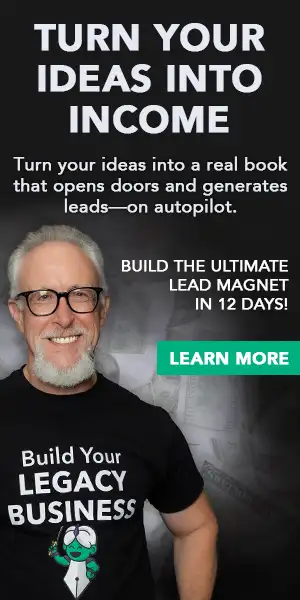
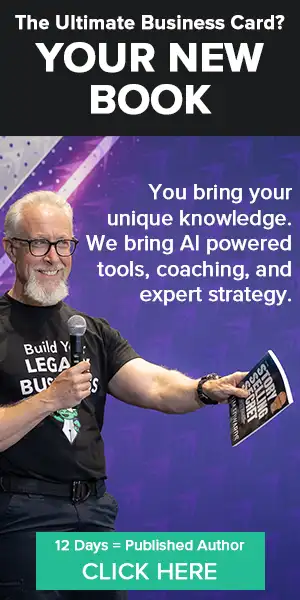
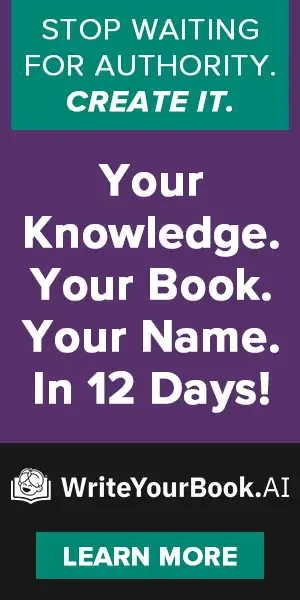
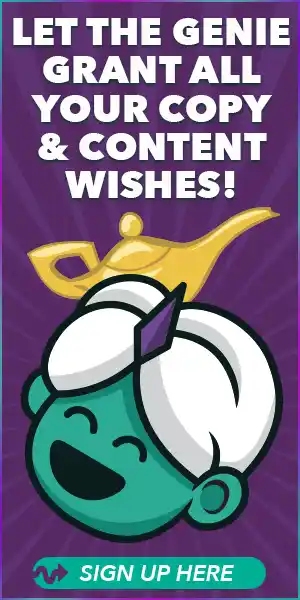
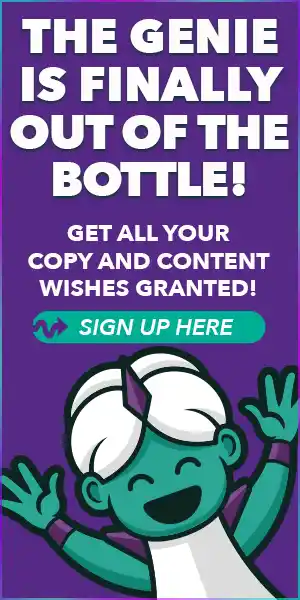



Leave a Reply